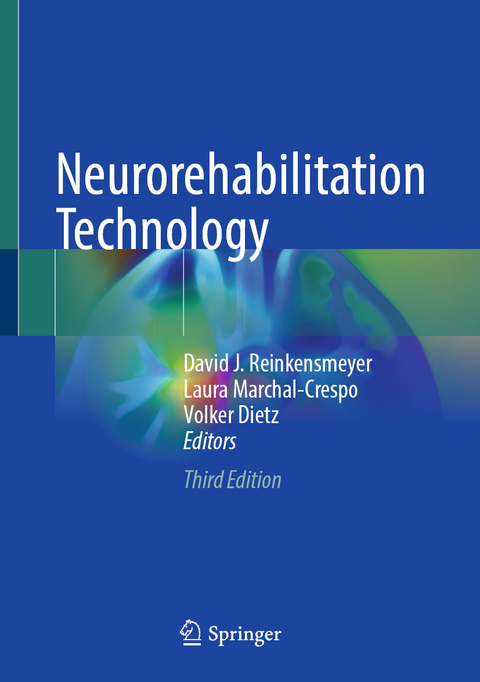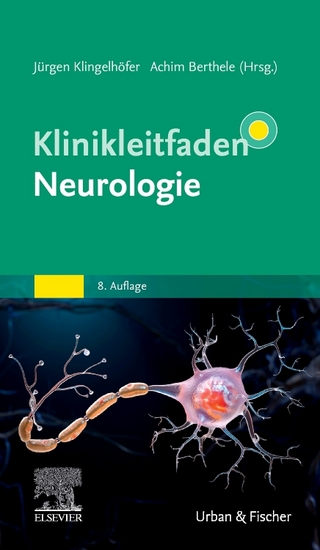
Neurorehabilitation Technology
Springer International Publishing (Verlag)
978-3-031-08994-7 (ISBN)
This revised, updated, and substantially expanded third edition provides an accessible, practical overview of major areas of research, technical development and clinical application in the field of neurorehabilitation movement therapy. The initial section provides the basic framework and a rationale for technology application in movement therapy by summarizing recent findings in neuroplasticity and motor learning. The following section provides a detailed overview of the movement physiology of various neurologic conditions, illustrating how this knowledge has been used to design various neurorehabilitation technologies. The third section then explains the principles of human-machine interaction for movement rehabilitation. The fourth section provides an overview of assessment technology and predictive modeling in neurorehabilitation. The fifth section provides a survey of technological approaches to neurorehabilitation, including spinal cord stimulation, functional electrical stimulation, virtual reality, wearable sensing, brain computer interfaces, mobile technologies, and telerehabilitation. The final two sections examine in greater detail the ongoing revolution in robotic therapy for upper extremity movement and walking, respectively. The promises and limitations of these technologies in neurorehabilitation are discussed, including an Epilogue which debates the impact and utility of robotics for neurorehabilitation. Throughout the book the chapters provide detailed practical information on state-of-the-art clinical applications of these devices following stroke, spinal cord injury, and other neurologic disorders and future developments in the field. The text is illustrated throughout with photographs and schematic diagrams which serve to clarify the information for the reader.
Neurorehabilitation Technology, Third Edition is a valuable resource for neurologists, biomedical engineers, roboticists, rehabilitation specialists, physiotherapists, occupational therapists and those training in these fields.
Chapter "Spinal Cord Stimulation to Enable Leg Motor Control and Walking in People with Spinal Cord Injury is available open access under a Creative Commons Attribution 4.0 International License via link.springer.com.
David Reinkensmeyer is Professor in the Departments of Mechanical and Aerospace Engineering, Anatomy and Neurobiology, Biomedical Engineering, and Physical Medicine and Rehabilitation at the University of California Irvine. His research interests are in neuromuscular control, motor learning, robotics, and rehabilitation. A major goal of his research is to develop physically interacting, robotic and mechatronic devices to help the nervous system recover the ability to control movement of the arm, hand, and leg after neurologic injuries such as stroke and spinal cord injury. He is also investigating the computational mechanisms of human motor learning in order to provide a rational basis for designing movement training devices. He is Editor-in-Chief of the Journal of Neuroengineering and Rehabilitation. His laboratory has helped develop a variety of robotic devices for manipulating and measuring movement in humans and rodents, including two devices that have been successfully commercialized as Flint Rehabilitation's MusicGlove and as Hocoma's ArmeoSpring. He is a fellow of the American Institute for Medical and Biological Engineering. Laura Marchal-Crespo is Associate Professor at the Department of Cognitive Robotics, Faculty 3mE (Mechanical, Maritime and Materials Engineering), Delft University of Technology, The Netherlands. Her research focuses on the general areas of human-machine interaction and biological learning and, in particular, the use of robotic devices and immersive virtual reality for the assessment and rehabilitation of patients with acquired brain injuries such as stroke. A major goal of her research is to gain a better understanding of the underlying mechanisms associated with the acquisition of novel motor skills in order to develop innovative technology to improve neurorehabilitation. She develops intelligent controllers that modulate movement errors based on patients' special needs, age, and training task characteristics using a wide selection of robotic devices for upper and lower limb rehabilitation. She further employs electroencephalography (EEG) and functional magnetic resonance imaging (fMRI) to identify neurocognitive markers underlying motor learning. Volker Dietz, neurologist, is Professor Emeritus and Former Director of Spinal Cord Injury Center and Chair of Paraplegiology, University of Zurich, Balgrist Hospital, Switzerland. His research is focused on neuroplasticity, neurorehabilitation technology and regeneration and his laboratory has developed the first robotic device for the training of stepping movements in paraplegic and hemiplegic patients, the 'Locomat'. He retired in 2009, having worked at the University of Zurich since 1992. He is currently Senior Research Professor at the University Hospital Balgrist. Previously he had an educational grant at the National Institute for Neurology, Queen Square, London and after he held a position at the University of Freiburg and was guest professor at the Miami project to cure paralysis. He has been on the editorial board of the several journals of neurology and neurosciences. He has been awarded various honors and awards including the prestigious Sobek prize for novel achievements in neurorehabilitation in 2006 and the Schellenberg Prize for outstanding research in paraplegia in 2012.
Introduction: Overview of the book.- Part I: Basic framework: Movement recovery and neuroplasticity.- Learning in the damaged brain/spinal cord: Neuroplasticity.- Movement neuroscience foundations of neurorehabilitation.- Recovery of sensorimotor functions after stroke and SCI: Neurophysiological basis of rehabilitation technology.- Part II: From movement physiology to technology application.- The upper limb after SCI: Use of technology in the assessment and rehabilitation.- Implementation of impairment based neuro-rehabilitation devices and technologies following brain injury.- The hand after stroke and SCI: Restoration of function with technology.- Neural coupling in movement coordination: Implications for rehabilitation technology.- Robotic gait training in specific neurological conditions: Rationale and application.- Part III: Principles for interactive rehabilitation technology.- Designing technology solutions for rehabilitation challenge that optimize motor performance.- Psychophysiological integration of humans and machines for rehabilitation.- Sensory-motor interactions and the manipulation of movement error.- Role of haptic interactions with machines for promoting motor learning.- Implementation of robots into rehabilitation programs: Meeting the requirements and expectations of professional and end users.- Application of rehabilitation technologies in children undergoing neurorehabilitation.- Part IV: Assessment technology and predictive modeling.- Robotic technologies and digital health metrics for assessing sensorimotor disability.- Computational neurorehabilitation.- Precision rehabilitation: Can neurorehabilitation technology help make it a realistic target?- Part V: General technological approaches in neurorehabilitation.- Spinal cord stimulation to enable leg motor control And walking in people with spinal cord injury.- Functional electrical stimulation therapy: Recovery of function following spinal cord injury and stroke.- Basis and clinical evidence of virtual reality-based rehabilitation of sensorimotor impairments after stroke.- Wearable sensors for stroke rehabilitation.- BCI-based neuroprostheses and physiotherapies for stroke motor rehabilitation.- Passive devices for upper limb training.- Mobile technologies for cognitive rehabilitation.- Telerehabilitation technology.- Part VI: Robotic technologies for neurorehabilitation: Upper extremity.- Forging Mens et Manus: The MIT experience in upper extremity robotic therapy.- Three-dimensional multi-degree-of-freedom arm therapy robot (armin).- Upper extremity movement training with mechanically assistive devices.- Part VII: Robotic technologies for neurorehabilitation: Gait and balance.- Technology of the robotic gait orthosis lokomat.- Using robotic exoskeletons for over-ground locomotor training.- Beyond human or robot administered treadmill training.- Toward flexible assistance for locomotor training: Design and clinical testing of a cable-driven robot for stroke, spinalcord injury, and cerebral palsy.- Body weight support devices for overground gait and balance training.- Epilogue: The ongoing debate over robots in neurorehabilitation.
| Erscheinungsdatum | 17.11.2022 |
|---|---|
| Zusatzinfo | X, 785 p. 189 illus., 157 illus. in color. |
| Verlagsort | Cham |
| Sprache | englisch |
| Maße | 178 x 254 mm |
| Gewicht | 1958 g |
| Themenwelt | Medizin / Pharmazie ► Medizinische Fachgebiete ► Neurologie |
| Naturwissenschaften ► Biologie ► Humanbiologie | |
| Naturwissenschaften ► Biologie ► Zoologie | |
| Schlagworte | Functional Electrical Stimulation • Locomotion • Neurorehabilitation • Neurorehabilitation technology • Posture • Robotics • Sensory-motor interactions • spinal cord • Virtual Reality • wearable sensor |
| ISBN-10 | 3-031-08994-4 / 3031089944 |
| ISBN-13 | 978-3-031-08994-7 / 9783031089947 |
| Zustand | Neuware |
| Informationen gemäß Produktsicherheitsverordnung (GPSR) | |
| Haben Sie eine Frage zum Produkt? |
aus dem Bereich


